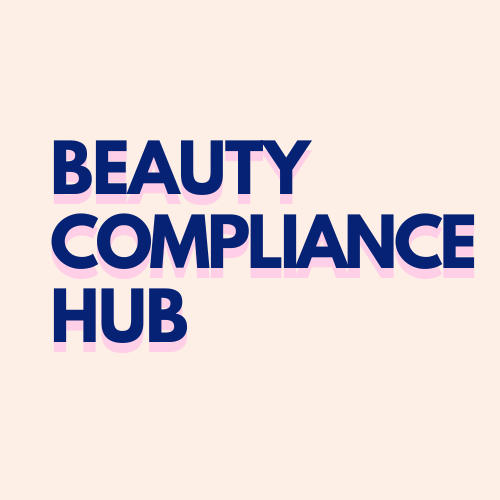Comprehensive Guide to Cosmetovigilance - What Brands Need to Know 🚨
Cosmetovigilance is the systematic monitoring of the safety of cosmetic products once they have been released to the market. It involves collecting, evaluating, and acting on information about undesirable effects and adverse reactions to ensure consumer safety and regulatory compliance. Given the global nature of the cosmetics industry, understanding regional requirements is crucial for brands aiming to expand internationally.
What is Cosmetovigilance?
Cosmetovigilance is a post-market surveillance system designed to detect, assess, understand, and prevent adverse effects associated with the use of cosmetic products. Unlike pharmaceuticals, cosmetics are not intended to treat or prevent disease, but they still carry potential risks. Cosmetovigilance ensures these risks are identified and managed effectively, maintaining consumer trust and brand integrity.
Why is Cosmetovigilance Important?
Regulatory Compliance: Many regions have strict requirements for cosmetic safety, including mandatory reporting of adverse events.
Brand Reputation: Proactively managing product safety protects a brand’s image and builds long-term consumer trust.
Consumer Protection: Ensures the safety and well-being of consumers, reducing the risk of harm.
Market Access: Meeting cosmetovigilance requirements is essential for entering and maintaining access to key global markets.
Regional Requirements for Cosmetovigilance
European Union (EU)
Regulatory Framework: The EU has one of the most comprehensive systems for cosmetovigilance, governed by the EU Cosmetics Regulation (EC) No 1223/2009.
Who is Responsible: The “Responsible Person” (RP) is legally required to collect and report adverse reactions to the relevant Competent Authorities (CAs) through the Cosmetic Product Notification Portal (CPNP).
Reporting: Both serious undesirable effects (SUEs) and non-serious undesirable effects (UEs) must be reported within 15 days of awareness.
Data Management: Detailed Product Information Files (PIFs) must include cosmetovigilance data.
United Kingdom (UK)
Regulatory Body: The Medicines and Healthcare products Regulatory Agency (MHRA) manages cosmetovigilance post-Brexit.
System: Similar to the EU, but with separate reporting requirements via the UK Submit Cosmetic Product Safety Reports (CPSR) system.
Responsibilities: UK Responsible Persons (RPs) must maintain ongoing vigilance and report adverse events promptly.
United States (US)
Regulatory Framework: The FDA monitors cosmetics under the Federal Food, Drug, and Cosmetic Act (FD&C Act) and the Modernization of Cosmetics Regulation Act (MoCRA).
Reporting: Adverse events can be reported through the FDA’s MedWatch system, but unlike the EU, this is not mandatory for all incidents.
Data Collection: Brands are expected to maintain internal records of consumer complaints and product safety concerns.
Asia (Japan, China, South Korea)
Japan: Regulated by the PMDA (Pharmaceuticals and Medical Devices Agency) and MHLW (Ministry of Health, Labour and Welfare). Mandatory reporting for adverse events.
China: Overseen by the NMPA (National Medical Products Administration). Requires post-market safety monitoring and mandatory adverse event reporting.
South Korea: Managed by the MFDS (Ministry of Food and Drug Safety). Companies must submit annual safety data and report adverse events promptly.
Middle East (UAE, Saudi Arabia, Egypt, Jordan)
UAE: MOHAP (Ministry of Health and Prevention) requires regular safety reporting.
Saudi Arabia: The Saudi Food and Drug Authority (SFDA) manages a structured cosmetovigilance system, including online adverse event reporting.
Egypt: The Egyptian Drug Authority (EDA) mandates cosmetovigilance through the National Pharmacovigilance Center.
Jordan: The JFDA (Jordan Food and Drug Administration) oversees cosmetic safety, with structured reporting requirements.
How to Implement Cosmetovigilance
Establish a Reporting System: Set up internal processes for collecting and evaluating safety data.
Train Staff: Ensure all relevant personnel are aware of their reporting responsibilities.
Use Digital Tools: Implement software for real-time data collection and trend analysis.
Regular Audits: Conduct regular reviews of safety data to identify potential risks.
Collaborate with Experts: Work with regulatory consultants to stay compliant as regulations evolve.
Conclusion
Cosmetovigilance is not just a regulatory requirement, it is a cornerstone of consumer trust, brand reputation, and long-term market success. As the global beauty industry continues to expand, brands must recognise that proactive safety monitoring is not optional but essential. By implementing robust cosmetovigilance systems, training teams effectively, and leveraging digital tools, companies can reduce the risk of adverse reactions, maintain compliance, and protect their market position.
From the EU’s stringent reporting requirements to emerging frameworks in Asia and the Middle East, understanding and integrating these regional differences into your safety strategy is critical. Ultimately, those brands that prioritise consumer safety and stay ahead of evolving regulations will not only protect their bottom line but also build stronger, lasting relationships with their customers.







